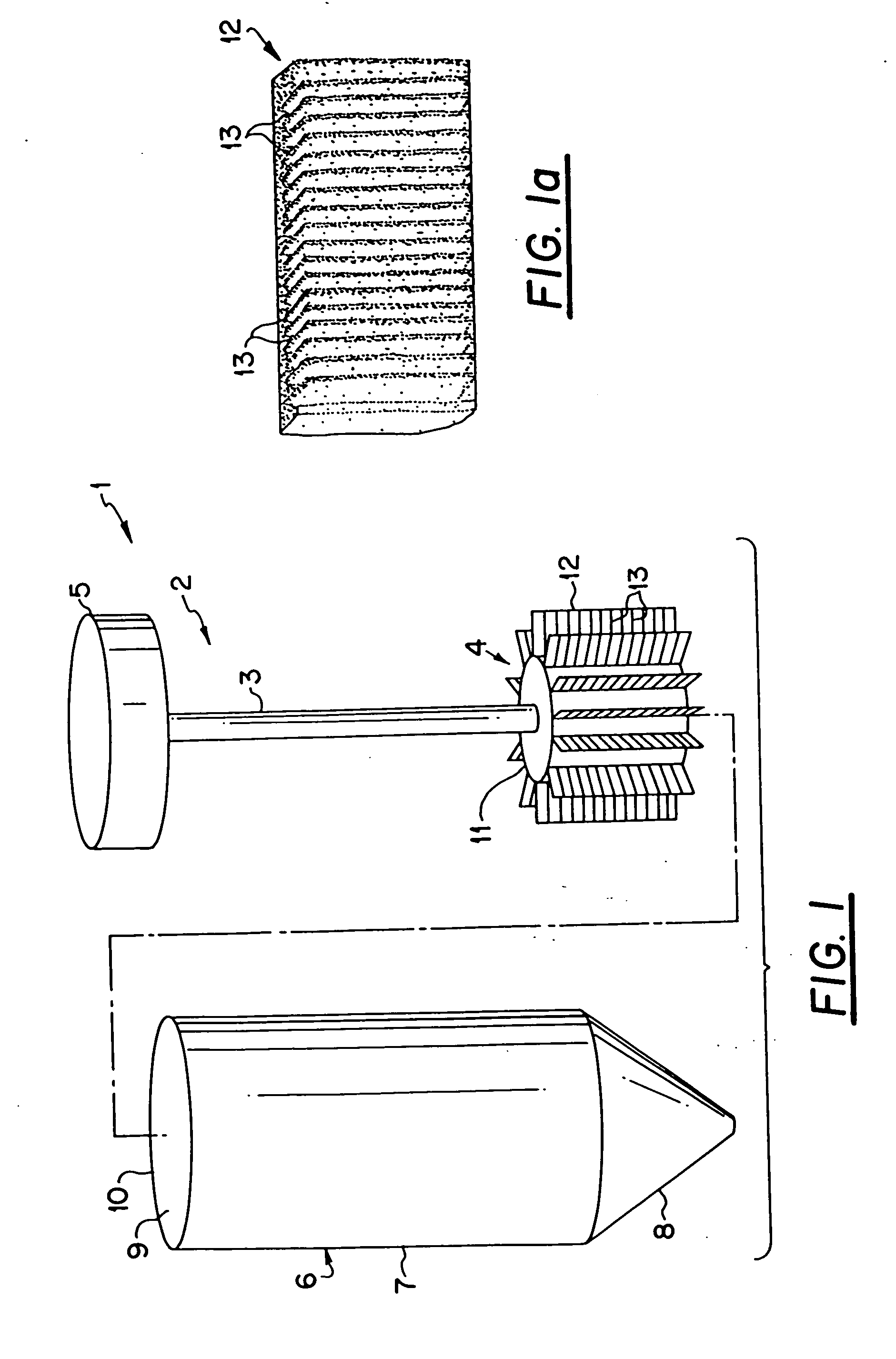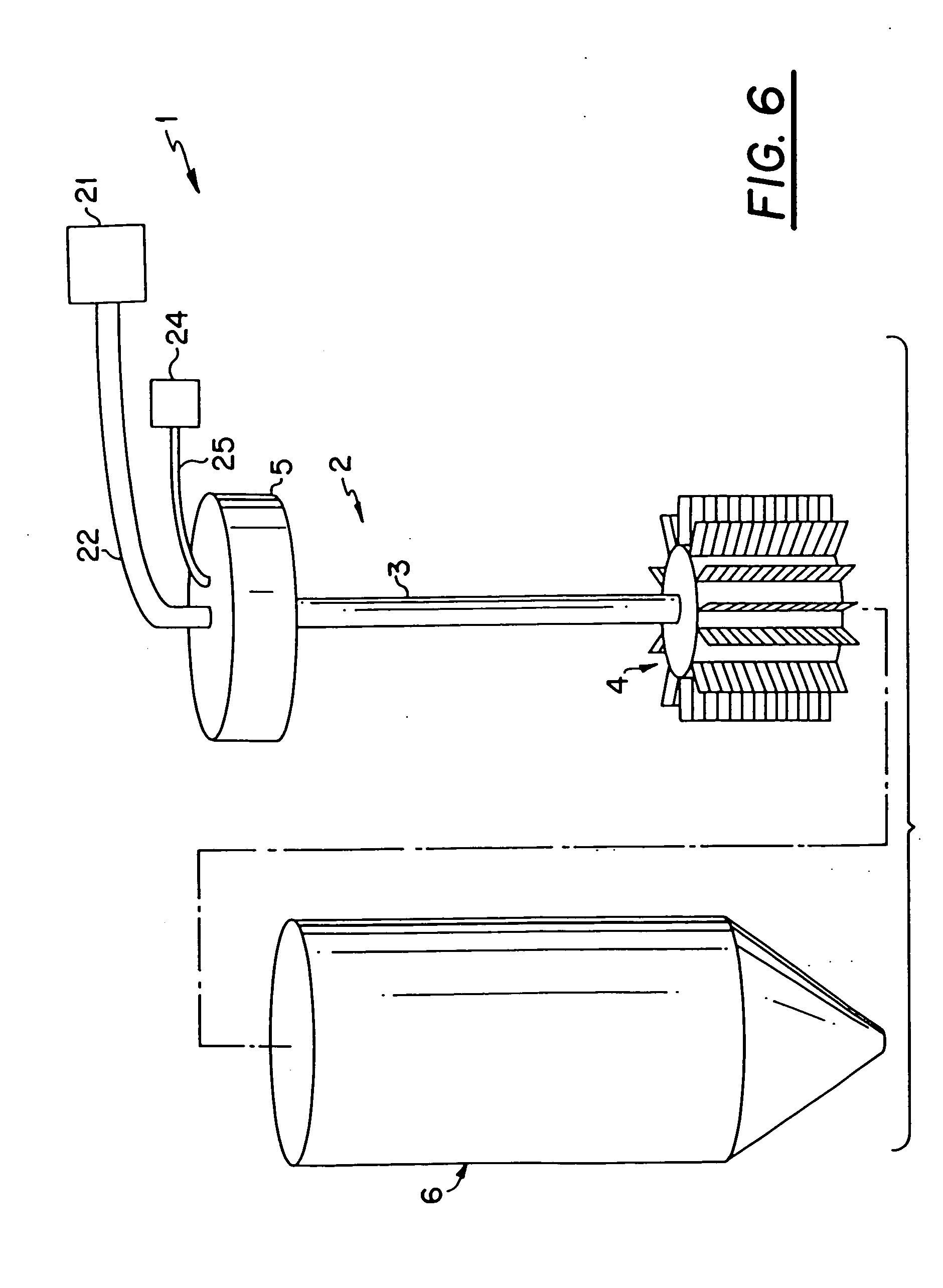Purification method and apparatus
a technology of nucleic acids and purification methods, applied in the direction of analytical tools, instruments, laboratory glassware, etc., can solve the problems of not allowing the flexibility of purifying different types of molecules, not providing vast surface area to maximize binding of molecules, etc., to prevent accidental loss of samples and enhance binding
- Summary
- Abstract
- Description
- Claims
- Application Information
AI Technical Summary
Benefits of technology
Problems solved by technology
Method used
Image
Examples
example 1
Nucleic Acid Purification
[0047] In a typical nucleic acids purification, mix 10-100 μl of sample with 100 μl of lysis / denaturing buffer in a 1.5 ml reservoir tube. Insert the shaft and sample capture assembly of the wand into the reservoir tube and close the reservoir tube with the cap. Vortex the reservoir tube for about 1 minute. Incubate the reservoir tube at 37° C. for about 5 minutes. Remove the wand, and insert the wand into a fresh reservoir tube containing 1000 μl of wash buffer. Vortex the reservoir tube for about 1 minute. Remove the wand and insert it into a fresh reservoir tube containing 100 μl of elution buffer. Heat the reservoir tube to abut 65° C. for about 5 minutes. The DNA or RNA is now purified and ready for further analysis or processing.
example 2
Nucleic Acids Detection
[0048] Detection of nucleic acids can be performed in a variety of formats. For example, after the captured nucleic acids are eluted into the reservoir, a biotin- and a digoxigenin-labeled probes can be hybridized, a streptavidin-coated capture assembly is immersed into the reservoir to capture they hybrid complex, then an antibody against digoxigenin is added to bind to the digoxigenin-labeled probe, then an enzyme labeled secondary antibody is added to bind to the primary antibody, then a chemiluminescent or calorimetric substrate is added to drive a colorimetric or luminescent reactions which can then be detected with a colorimeter, photoluminometer or by an electric current measuring device. A number of washing steps must be performed between the addition of reagents in the same or different reservoirs to remove unbound molecules. These hybridization and detection methods are known in the art.
[0049] It is also possible to configure the detection assays ...
example 3
Antigen Capture and Detection
[0051] Mix 10-100 μl of sample with 100 μl of lysis / denaturing buffer in a 1.5 ml reservoir tube. Insert the shaft and sample capture assembly (after coating with appropriate antibody) of the wand into the reservoir tube and close the reservoir tube with the cap. Vortex the reservoir tube for about 1 minute. Incubate the reservoir tube at 37° C. for about 5-15 minutes. Remove the wand, and insert the wand into a fresh reservoir tube containing 1000 μl of blocking buffer. Vortex the reservoir tube for about 1 minute. Incubate at 37° C. for about 5-15 minutes. Remove the wand and insert it into a fresh reservoir tube containing 100 μl of conjugate solution. Remove the wand, and insert the wand into a fresh reservoir tube containing 1000 μl of wash buffer. Shake or agitate for 1 min. Discard wash buffer and repeat the washing step. Remove the wand and insert it into a fresh reservoir tube containing 100 μl of detection reagent. Analyze the color and deter...
PUM
| Property | Measurement | Unit |
|---|---|---|
| temperature | aaaaa | aaaaa |
| pH | aaaaa | aaaaa |
| ionic strength | aaaaa | aaaaa |
Abstract
Description
Claims
Application Information
 Login to View More
Login to View More - R&D
- Intellectual Property
- Life Sciences
- Materials
- Tech Scout
- Unparalleled Data Quality
- Higher Quality Content
- 60% Fewer Hallucinations
Browse by: Latest US Patents, China's latest patents, Technical Efficacy Thesaurus, Application Domain, Technology Topic, Popular Technical Reports.
© 2025 PatSnap. All rights reserved.Legal|Privacy policy|Modern Slavery Act Transparency Statement|Sitemap|About US| Contact US: help@patsnap.com



